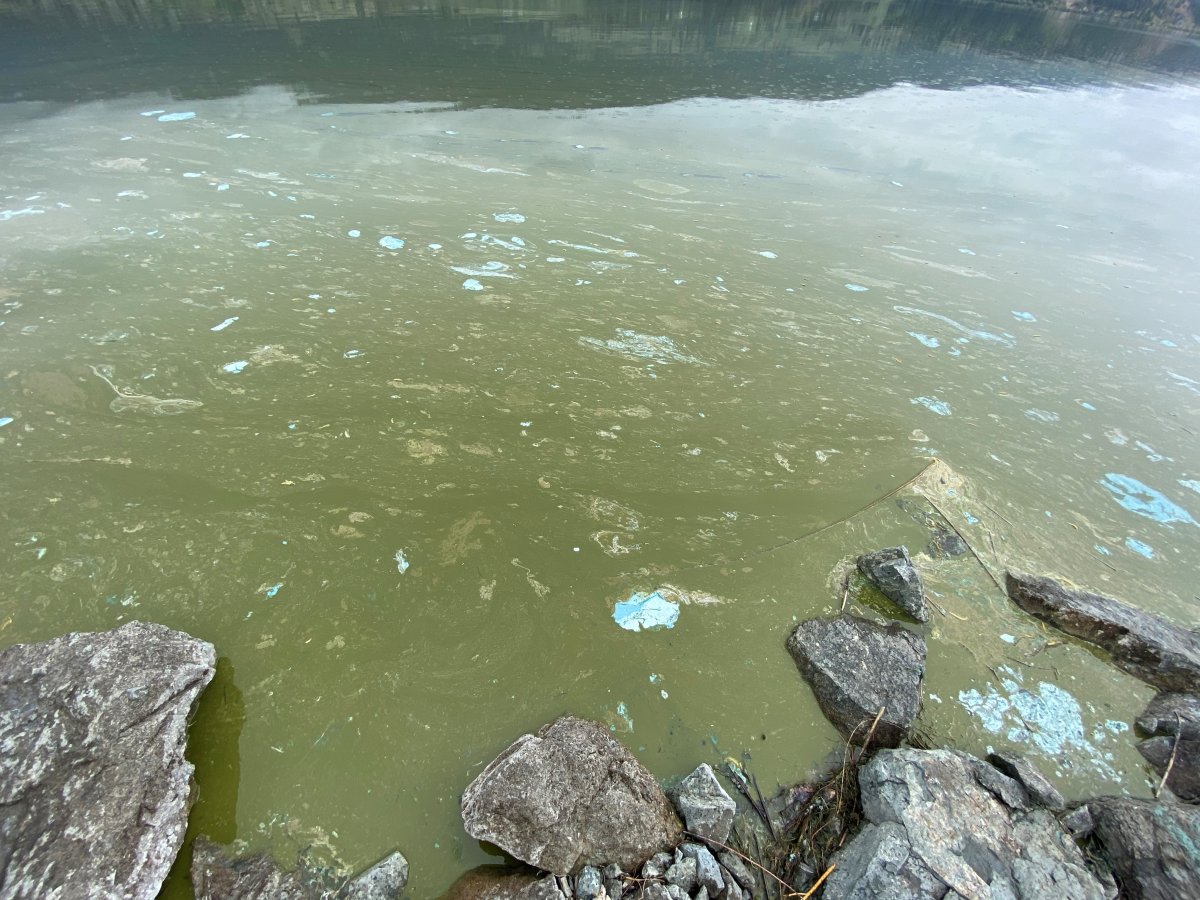A website dedicated to tracking algae blooms across B.C.’s lakes has been launched by the province.

The Ministry of Environment announced the website, Algae Watch, on Wednesday, stating 53 lakes are being monitored for algae blooms.
“The website helps people recognize potentially harmful algae blooms and differentiate algae blooms from other natural phenomena, such as foam or pollen, which can sometimes look like blooms,” said the ministry.
The province says algae is a natural part of all aquatic ecosystems, but that prolific growth can cause a dense mass or bloom to form.
Most of the blooms are harmless, according to Sokal, but some species have the potential to produce toxins that can be dangerous to people, pets or livestock.
Last July, a large algal bloom occurred on Shuswap Lake, filling most of the Salmon Arm end of the lake, “turning the pristine water into pea soup for several weeks.”

Get breaking National news
“We’ve never seen anything quite like that. We’re still trying to fully understand the cause,” said Mike Sokal, a water quality limnologist for B.C.’s Ministry of Environment and Climate Change Strategy.
“The lake was visually unappealing, but health officials noted the water was safe for all recreational activities and public drinking water systems.”

The province says people are invited to contribute information to create a comprehensive picture of B.C.’s algae situation.
People can use the online form to provide information and photos of an algae bloom.
“The website can help us track changes over time and identify areas of the province that are getting more algae blooms. We can then start investigating what’s causing these changes,” said Sokal, who receives calls every year from people concerned about algae at their local lake.
“It’s really encouraging to see people interested in what’s happening at their lake. Some of those concerned citizens become champions for the lake and start local sampling programs.”
The ministry says cyanobacteria (also known as blue-green algae) blooms are of particular concern, as there are several species capable of producing toxins that can be harmful to humans, domestic animals and livestock.

According to the province, most algae blooms form when there are increased nutrients, warmer temperatures, abundant light and stable wind conditions.
It also said some human activities, such as agricultural run-off or improperly placed or poorly functioning septic systems, can also make blooms more likely.
Anyone with immediate concerns related to drinking and/or recreational water use is asked to contact their local health authority.
Visit the province’s website to learn more about algae blooms.




Comments